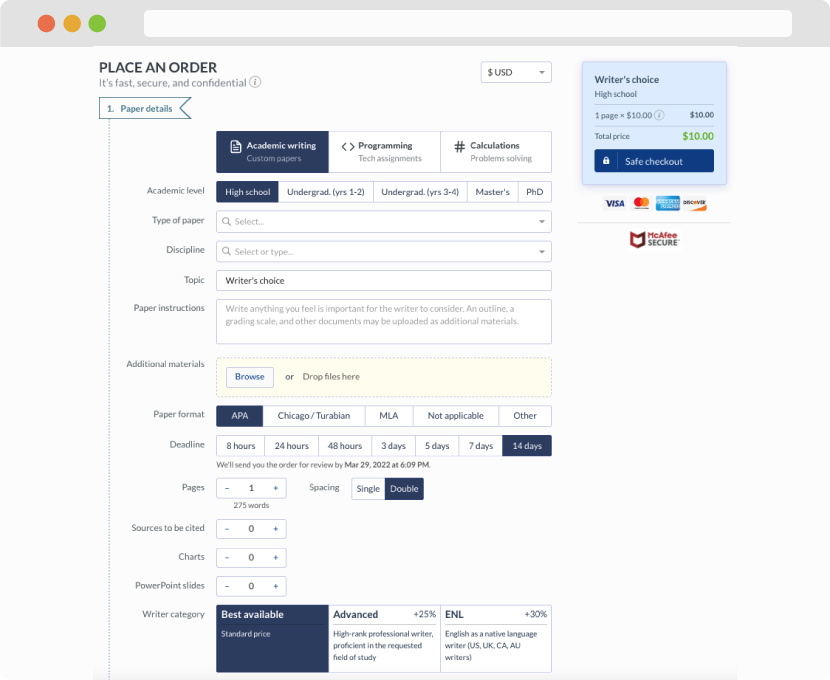| Objectives |
Select, develop, and analyze two mini case studies. The purpose of this project is to identify a successful strategy and compare and contrast it with an unsuccessful strategy, with the aim of identifying critical success factors (CSFs). You may select two strategies developed in the same company or from entirely different companies—or, indeed, different industries.
Case studies are used extensively in teaching business. Typically students perform an analysis on a case study prepared by an author or the professor—in this instance, the student is the author of the cases. The case study research strategy provides the opportunity to develop an in-depth understanding of an organization or event—data can be collected from multiple sources (for example, company websites, interviews, or published articles).
Please select two examples that reflect success and failure—collect data from multiple sources and develop two mini case studies of 500 words in length. Perform a cross-case analysis by comparing and contrasting the case studies on points of parity and points of difference. This should entail developing a framework, similar to many of the frameworks presented in class (e.g., SWOT or Five Forces) and analyzing the key data in your case studies. The analysis should be presented after your case studies and should be followed by a brief concluding statement and references in APA format.
| Guidelines |
Mini Case I: (Success): Sufficient length begins with general points and moves to a focus on specifics, evidence of success, good quality content—relevant, accurate, and timely.
Mini Case II: (Failure): Sufficient length begins with general points and moves to a focus on specifics, evidence of failure, good quality content—relevant, accurate, and timely.
Cross-Case Analysis
: Once you have completed your cases you need to conduct a cross-case analysis. This requires comparing the two cases to determine points of similarity and points of difference.
Research Skills
: Each case uses four to six sources, and sources are cited in the text and at the end of the case study in APA format.
Writing Skills: Ideas are communicated clearly in business English and using the appropriate business terminology. Work should be prepared following the development of a rough draft, revision, editing, and proofing to produce a final polished report.
A successful project will meet all of these requirements to earn a maximum of 200 points. At the conclusion of this project it will be beneficial to compare what factors are selected by your peers. Are there patterns here?
Milestones
| Grading Rubrics |
%
40 20%A quality paper will meet or exceed 500 words.
Cross-Case Analysis 40 20%Research Skills 40 20%Writing Skills 40 20%| Category | Points | Description | ||||||||||
|---|---|---|---|---|---|---|---|---|---|---|---|---|
| Mini Case I: Success | 40 | 20% | A quality paper will meet or exceed 500 words. | |||||||||
| Mini Case II: Failure | ||||||||||||
| Includes framework and critical success factors. | ||||||||||||
| Based on accurate, relevant, and timely sources. | ||||||||||||
| Business English, grammatically correct, error free, APA format. | ||||||||||||
| Total | 200 | 100% | A quality paper will meet or exceed all of the above requirements. |
|
Best Practices |
The Process for Developing a Case Study and Cross-Case Analysis
Cross-Case Analysis
Once you have completed your cases you need to conduct a cross-case analysis. This requires comparing the two cases (or more) to determine point of similarity and points of difference. The objective is to determine the critical success factors (CSFs). What are the key factors that led to success? Understanding success also involves studying failure.
The following framework might be helpful. You should identify factors for comparison based on the characteristics of your own cases. Such factors might be charismatic leadership, global growth, effective value chain network.
The CSFs are based on your judgment of the evidence you have collected, and should emerge as you work through this framework. What are the key factors that have led to success. It will be beneficial to compare what factors are selected by your peers. Are there patterns here?
You can present your analysis in your report as a figure, but remember to introduce it and comment on what it means and present your CSFs in the text. Remember to number your figure and give it a title, e.g.
Figure 1: Cross-Case Analysis
, see below:
Figure 1: Cross-Case Analysis
| Success: Company X | Failures: Company Y | Critical Success Factors | ||||
|---|---|---|---|---|---|---|
| Similarities: | ||||||
| Differences: |
Essay Writing Service Features
Our Experience
No matter how complex your assignment is, we can find the right professional for your specific task. Achiever Papers is an essay writing company that hires only the smartest minds to help you with your projects. Our expertise allows us to provide students with high-quality academic writing, editing & proofreading services.
Free Features
Free revision policy
$10Free bibliography & reference
$8Free title page
$8Free formatting
$8How Our Dissertation Writing Service Works

First, you will need to complete an order form. It's not difficult but, if anything is unclear, you may always chat with us so that we can guide you through it. On the order form, you will need to include some basic information concerning your order: subject, topic, number of pages, etc. We also encourage our clients to upload any relevant information or sources that will help.
Complete the order form